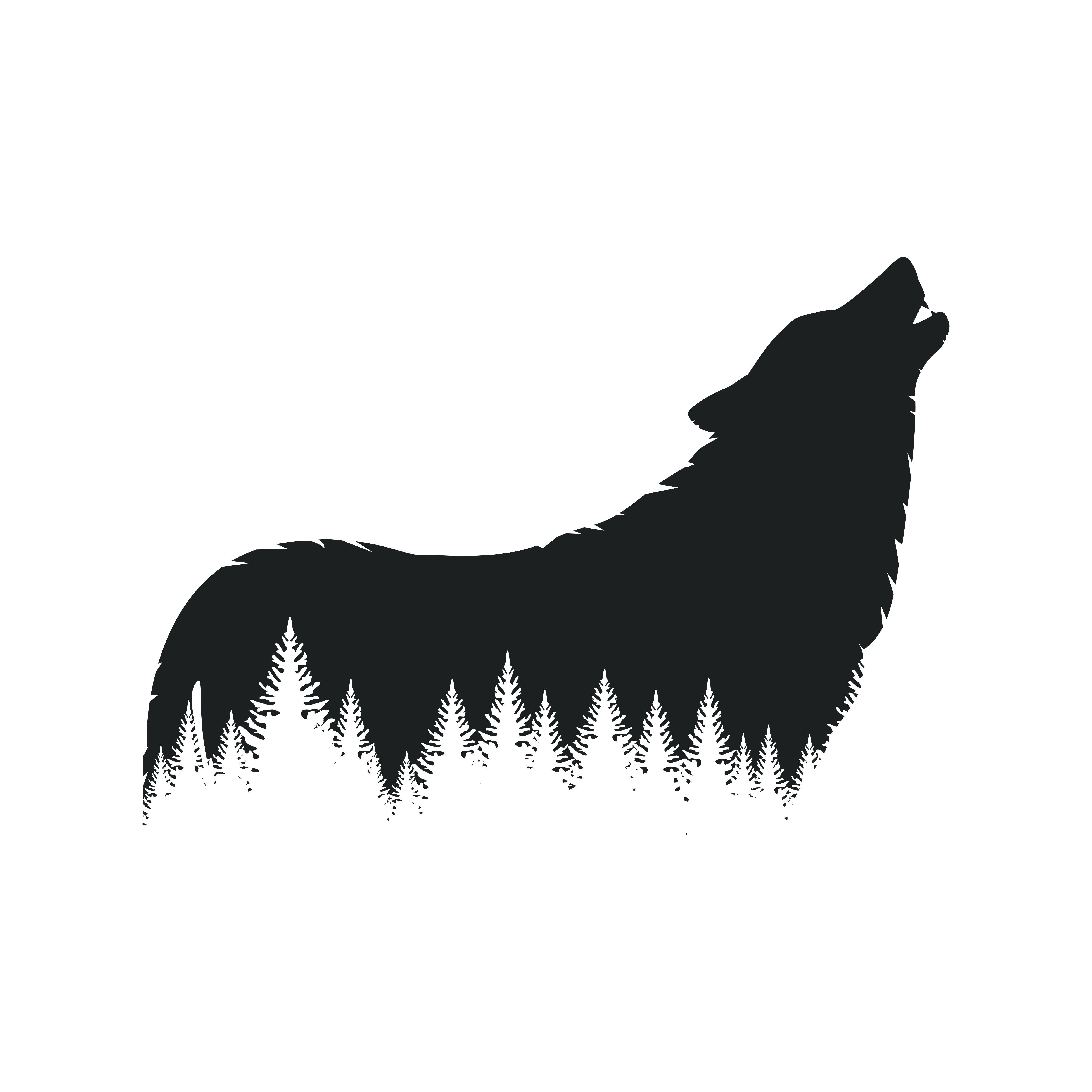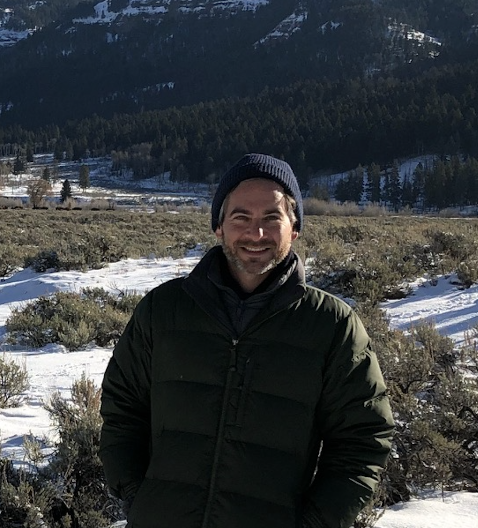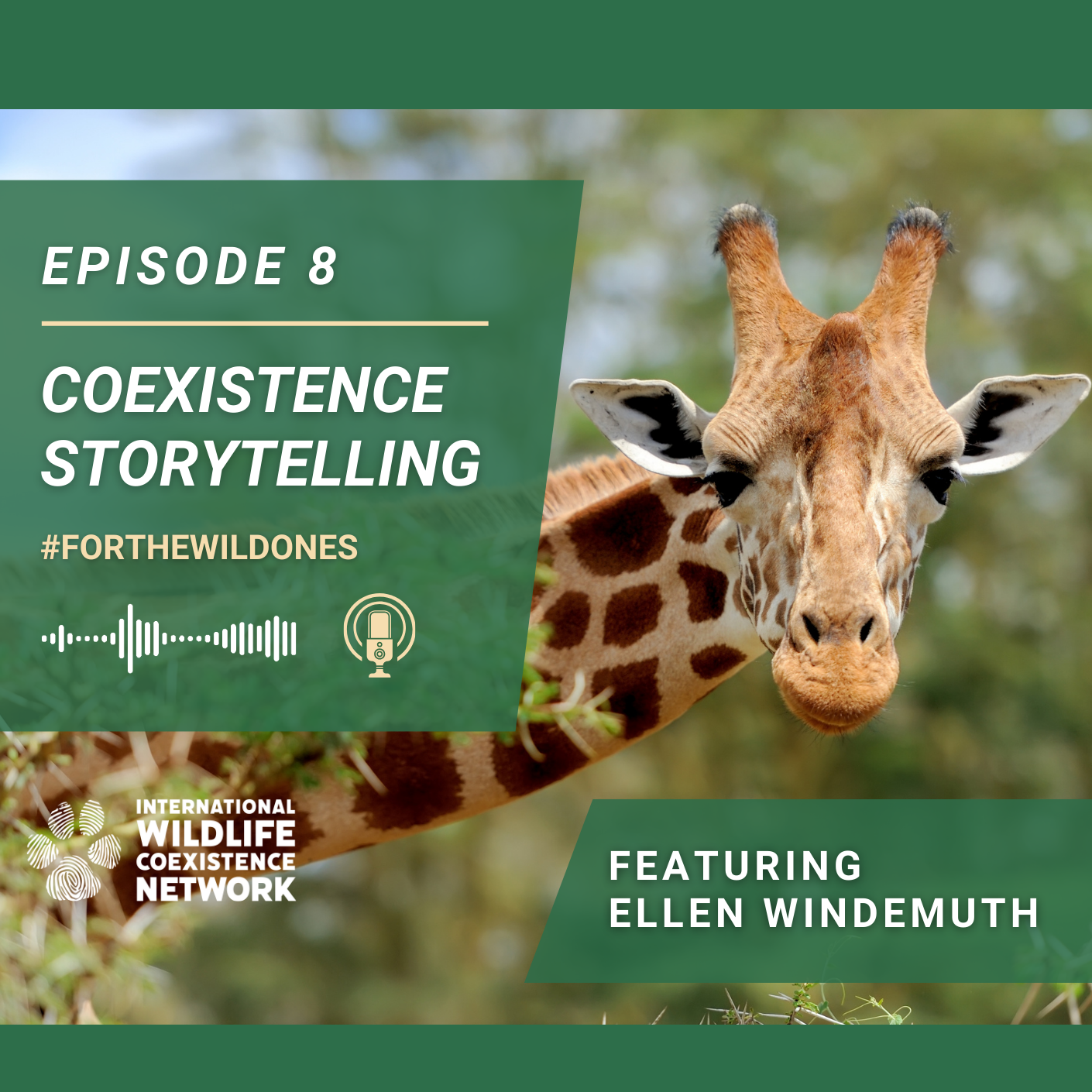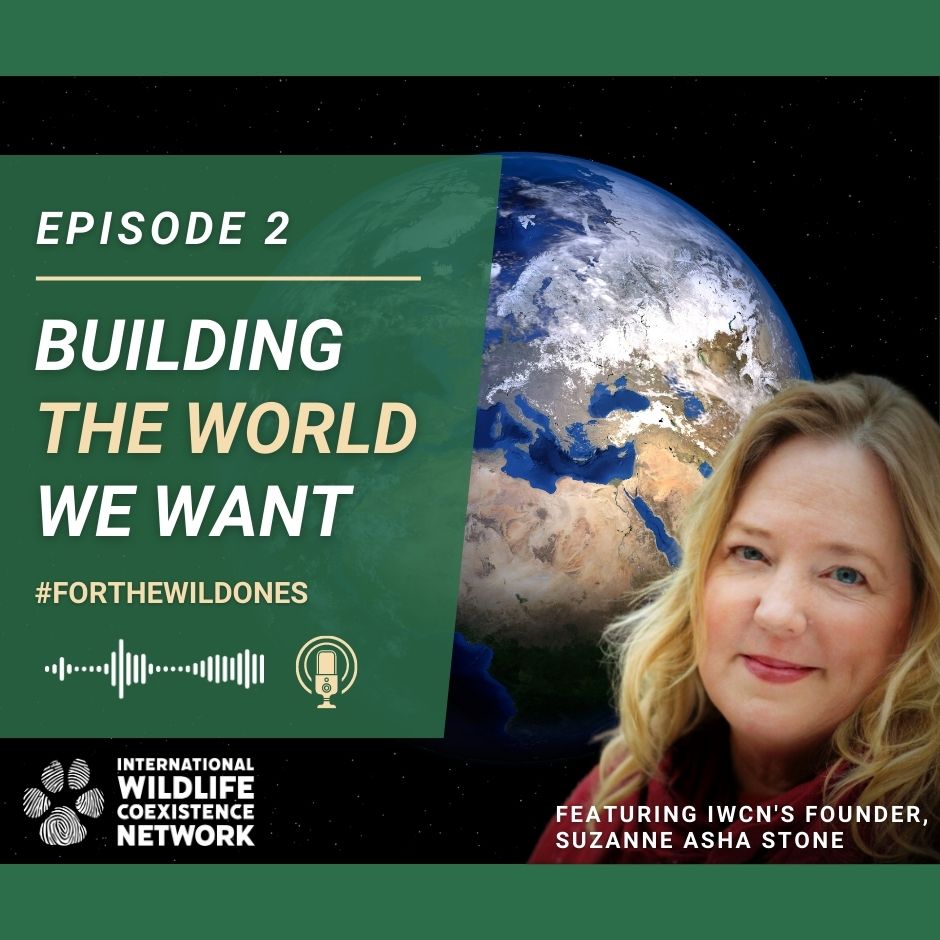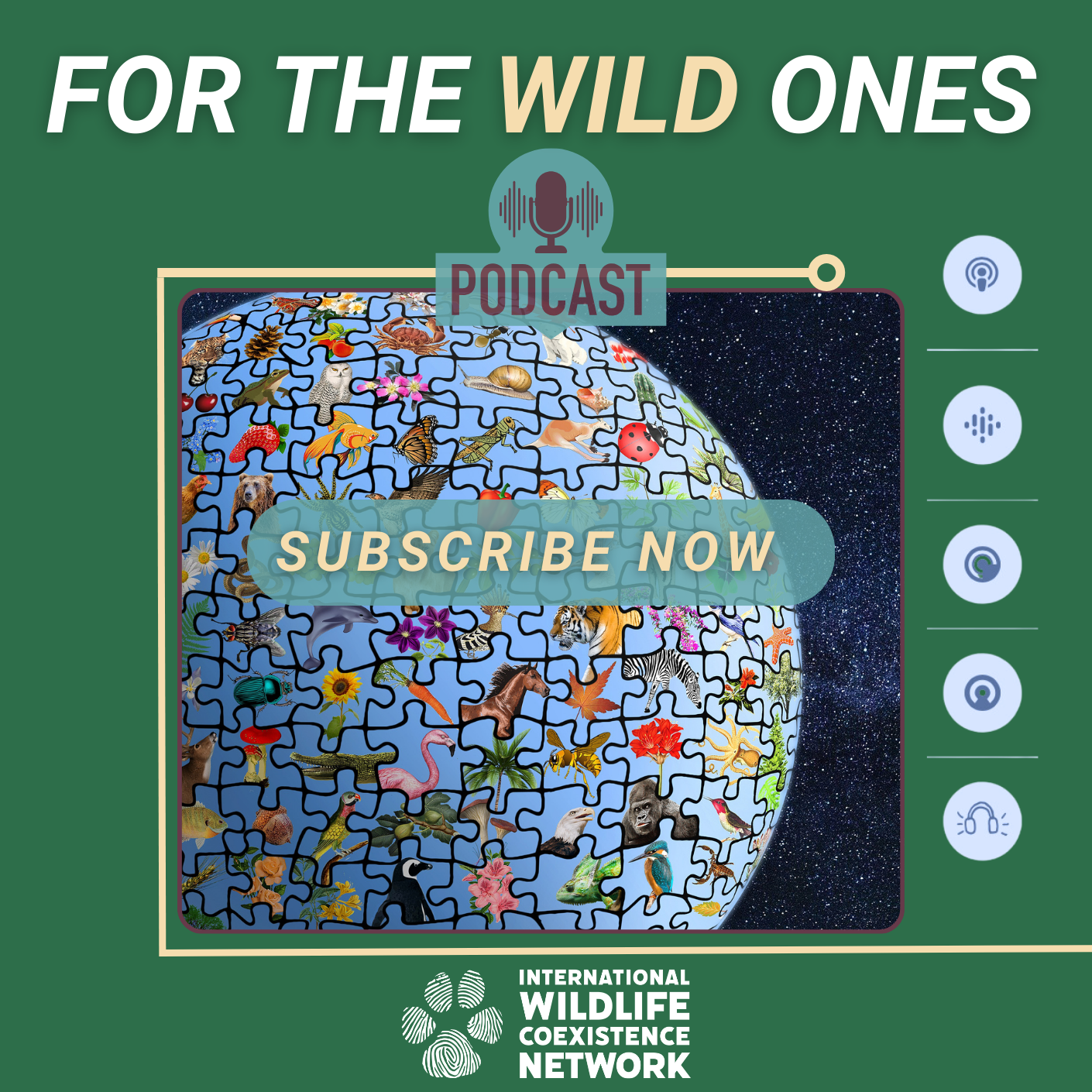Episode Transcript
[00:00:00] Speaker A: You.
[00:00:03] Speaker B: How can storytelling create change? What's it like to watch a film with 28,000 people? And how can the film industry spread the message about coexistence?
We're about to find out on this.
[00:00:17] Speaker C: Episode of for the Wild Ones.
[00:00:25] Speaker A: Close.
[00:00:26] Speaker C: This podcast is brought to you by.
[00:00:28] Speaker B: The International Wildlife Coexistence Network. Hi, I'm your host, Josh Adler. Thanks for listening. We have an exciting guest with us today, a hero in my world of storytelling, journalism, and documentary filmmaking, Ellen Vindemuth, founder of the Water Bear Network, a Netflix for the Planet, as well as an Academy Award winning producer of my Octopus Teacher, a film that I love deeply. But that's only the tip of the iceberg with Ellen. She's produced hundreds of hours of wildlife films. She's supported filmmakers from around the world, and she continues to innovate with films like the Letter, A Message for our Earth, starring six people from different nations experiencing the challenges of climate crisis, who all go to meet the Pope. Yes, the Pope.
[00:01:26] Speaker C: You can't hear. I'm doing a little bit of a stretch, which I feel is really necessary in terms of keeping the blood flowing. There's a Netflix series about the blue zones and centenarians. There's the uphill walking that they do every day. And it just made me so depressed for my very fortunate, privileged life of doing work in front of a screen. But at the same time, there's this incredible downside of just sitting all day.
[00:01:55] Speaker A: Good point.
[00:01:55] Speaker C: It's a point, actually, about reconnecting with nature in terms of our evolutionary attitude or habits, towards movement, towards being out in the world, rather than stuffed away in ourselves or caves. I'm wondering, how do you stay connected in your daily life, in your daily routines or habits? What keeps you connected to nature and your environment?
[00:02:21] Speaker A: I think probably two very important things. One is I have two dogs and four cats. So I communicate with my friends, my animals, every single day, and I live with them because I work from home now. I find that super important. AnD the second thing is, I do make a point of going outside. I live next to a forest. And the thing that keeps me most balanced is actually just, especially at this time of year, take some earth and leaves into your hands and stick your nose in, because our olfactory sense immediately resets us when we're in nature. So you have this very close connection between what you smell and your brain, and it's a reset that is very easy and very effective.
[00:03:08] Speaker C: Do you feel like the more that you get your hands and kind of nose into the soil, and the earth, the more you are enlivened, or do you feel like it's sustaining a certain level?
[00:03:24] Speaker A: It certainly is important to do it regularly. The other fun thing that I just heard is we don't have one nose, but we actually have two nostrils that work independently, just like both eyes. They work independently from each other, which I think is really fun. When you explore the olfactory sense, I think it's important to do, if you can, every day, and if you can't get out of your car and walk in the woods for half an hour, just go outside and at least smell something and remind yourself. And it also changes the way you look at things suddenly, once you smell these leaves, you look at a tree and you go, wow, what a beautiful shape this tree has. Or when the tree is devoid of leaves, the shape of the branches is unbelievable. So much beauty in nature without anybody seemingly having to design anything. Right?
So I do think it's important, and you have to do it on a very regular basis to stay connected.
[00:04:26] Speaker C: There's this deep aspect of storytelling in what you're saying about the shapes of trees and our senses, our eyes, our nose, our nostrils, how they operate individually, but then arrive at some common narrative. Oh, this is an orange. Oh, this is a leaf, or this is a tree. How is it that we craft these narratives of our world, and then how do we share these stories in a way that makes our lives more meaningful?
[00:05:04] Speaker A: When you think about the wildlife genre or the natural history film and the way it's evolved, that storytelling has been evolving for 50 years from being something with voice of God, crappy cameras at the time, filming things that were very, very slow up to what you now find the BBC can come up with, like their new series on Netflix. There's a big evolution in the genre, but the films that worked best for me were small stories that started in a small place with an interesting human character who was interacting with animals and nature. Those films seem to work best for audiences, and I think I'm exactly that audience, because people like immersion. I don't think people like being taught or spoken at instead of being taken on a journey.
[00:06:02] Speaker C: Can you give an example of an immersive film that's either influenced you or one of your own?
[00:06:08] Speaker A: There were many, and the obvious one is my octopus teacher. But I would also say I take no credit for having crafted the film that way, because it just happened to be a story that happened to us. But the reason why the film works is because it's about one man in a very small community that's part of a beautiful natural habitat, Kelp Forest, who has an extraordinary experience with an octopus. I think that spoke to so many people in so many ways, because Craig himself has so much integrity as a storyteller and therewith as a character in the film. But there are other films that I think have been similarly interesting.
There was an extraordinary film about a man who was really good friends with turkeys. He's a turkey dude. And I thought that was interesting. Like, look at that man's world. And then I remember seeing an Australian film about a man who was really good friends with chickens. He was super depressed until he moved out of town, and then he became super good friends with chickens, and he had a lot of chickens around. Just exploring the world of people who are desperate for that connection is really helpful for all of us, because I think we're just as desperate.
[00:07:27] Speaker C: Interesting how it seems like we do need that human character in there. Can you think of examples where the animals are character enough?
[00:07:39] Speaker A: I've worked on films like that. Generally, films work where two animal characters are in conflict with each other. Maybe they're rivals for the same female or they're rivals for the same habitat. There's lots of interesting films done with warring lion prides. Or I did a very funny film one time with Probosa's monkeys called the biggest nose in Borneo with Michael Wong. He was the director of the film. And it was a really fun film where no human was anywhere in the film. So I think they can be done. I think they happen. It's just that you do have to draw the line and not make too many assumptions, because the science has to be correct. You must not make these animals look too human. But it's fun. And I think people like watching those things. I think people love watching different species interact with each other in an unusual way. Right. I think people find it really interesting because we're not in the wild, and we don't have the luxury of just sitting in a spot and watching animals all day. But animals of different species interact in quite extraordinary ways. And, of course, it's very heartwarming to see when they are nice to each other, when they're good to each other, when they defend each other in various ways. I think those things are fantastic. I don't know if you know Nan Hauser, but she's a whale scientist, and Nan had an extraordinary experience where a hammerhead shark was swimming towards her, and it was a very large hammerhead, and that Hammerhead was not being playful, and she was saved by a humpback whale.
I find that amazing things like that are indefinitely fascinating. And I think I'm not the only person who's indefinitely fascinated with these kinds of acts of kindness or acts of foresight or strategic moves that animals make that humans assume they are unable to make cognitively.
[00:09:46] Speaker C: It's something that the film world has revealed to humanity in this incredible way, to make the intelligence of wildlife around us visible in ways that constantly transcend our expectations.
[00:10:01] Speaker A: And I think that's where it's at, right. I think that's where we want to be. I'm sure that these BBC series do really well. They use fantastic graphics, and I call them chocolate box films, right? It's like having a big box of chocolates. And here's one habitat, there's another habitat, there's one species, another species. There's this incredible money shot, then there's another sunset. They're beautiful, then they're graphics, and everything works together, but it doesn't feel like I'm in that world. And it also kind of feels like having eaten a whole box full of chocolates, you sort of feel a little bit like, don't know how well that fits with what I really wanted. Right.
[00:10:44] Speaker C: And yet, speaking from personal experience with wildlife filmmaking, something that's not the chocolate boxed variety, that maybe offers a little more spinach, as we say in the film world, difficult to get out through networks, get out to larger publics, because maybe they're considered more niche. It's a less successful format if it's maybe more focused on human wildlife relations. But you've been able to get those more sophisticated stories out there that aren't full of million dollar graphics or endless sunset shots. How have you been able to get those stories out?
[00:11:24] Speaker A: I think there's only one reason for that, and that is tenacity. Because I had a company that I built, I had a company behind me. It allowed me the time to go from broadcaster to broadcaster, from platform to platform, and just talk to people and talk to people until they said yes. What it means, really, Josh, is there's no easy way of getting those films done. The problem a lot of filmmakers have who are capturing the absolute right stuff, the greatest material, is they don't have the budgets to compete with large broadcasters and platforms. They don't have a Disney budget. Right. They don't have a BBC budget. So very often, for quality reasons, broadcasters turn them down. And the second big problem for people who are making these very special films is post production, and people are generally not given enough time to edit these films to the perfection they need to be edited at. But I had a lot of sleepless nights because you have to work really hard not only on making them, but you have to work really hard on getting them broadcast or streamed.
[00:12:37] Speaker C: You've produced over 500 hours of films and series. You had extraordinary opportunities to travel, and I'm wondering if you could just share some of your favorite encounters with wildlife.
[00:12:50] Speaker A: Well, in a way, my business partner, Allison Bean, she was our head of creative at off the fence. She did a lot of the location work because I had three children. So she has had a lot more encounters than I have. But of course, I've been on location a number of times, and my favorite trips were always Africa trips because it's just so extraordinary. It really feels like this is probably where we all come from. That's how strongly I feel about it. It just is unbelievably uplifting and familiar. And encounters I had, there were many. I remember just sitting under a tree and, I don't know, minding my own business, and I look up and there's this huge male giraffe looking straight at me with his head very close to my face, because he was just curious. And it was such an interesting encounter where you see the intelligence in those eyes, and you see so much more than people think when they think about, oh, a giraffe. I had a really scary encounter once with the male baboon. I had a pretty scary encounter with a rhino. I've also, because I had a shark period in my life where I was working on a lot of shark films, looking into the eye of a great white shark is really, really interesting as well. You just don't forget those moments. They're really electrifying. A male lion, when they look at you, they look straight into you in some crazy way, and it's a deep, primal connection.
[00:14:34] Speaker C: Do you have any sense of maybe, what would they be saying to you? What would they be perceiving in that look, that shark or that lion or that giraffe?
[00:14:45] Speaker A: They would maybe be perceiviNg, what is this very unpleasant smelling alien doing in my habitat?
[00:14:57] Speaker C: Ah. I feel like that when I have house guests over sometimes.
It is primal.
[00:15:05] Speaker A: Look at you, like, whoa.
I felt that, too. I thought, yeah, I know they must find it really a stretch to figure out why I'm here, but I really want to be here. Yeah, that's sort of the feeling I got. But there's also something much deeper, which is animals have consciousness, and I have consciousness, and I believe we share that consciousness. And I think any scientifically endowed person will now be horrified, but I think it should lead to our reconsidering the legal status of animals. I think that animals should be classified legally as non human beings. I think they're beings, and I think we share consciousness. And I think the reason why so many animals are now being lost and going extinct is because people still believe that animals are things on similar level, but they're not.
[00:16:02] Speaker C: Well, there are certainly a lot of folks who would agree with you, and some of those folks are also lawyers who have been attaining rights. I think we recently had rights granted to whales, and I know we're seeing some rights granted to mountains or waterways as a nature rights movement.
[00:16:25] Speaker A: There's also, I believe, a gorilla named Coco, who was classified successfully as a non human being. I think we should do much, much more work on that. And speaking to any wildlife filmmakers I can, I really would like to encourage people to help us get animals classified, make films so that people do realize they're not things and we're not separate from them. We share the same consciousness, and that legal classification could help us really get us pretty far in terms of preserving biodiversity.
[00:16:57] Speaker C: I couldn't agree more. I want to dig into this connection that you're drawing between filmmaking, storytelling, and impact. You said that making films helps people realize. And then how does that help actually change our world?
[00:17:12] Speaker A: Well, I think you need more than watching a good film to have impact. And I think that that's the frustration of a lot of natural history filmmakers today. Your film, if it's put on a big platform like Netflix, it's consumed, and then your moment of engagement is over, and then you go watch something else, right? Then you'll just switch channels and go watch something entertaining. And the issue is, I don't really think that films are very effective for any great breakthroughs in policy making. I think a national history film has to be accompanied by a deliberate, robust campaign for which there are people who do nothing but that, right? There are people who are campaign producers, who work alongside natural history film producers to run this campaign across all media, right? To get people thoroughly conscious and give them access to tools. Because when you see a film, you don't really have access to any tools. You maybe get a website at the end in the credits.
[00:18:15] Speaker C: So this leads us to Waterbear Network, which you've created, which provides a platform for filmmakers around the world who maybe wouldn't have their films out there, but also connects their films to organizations that are doing work on the ground for conservation, for social change. Can you tell me about how you've seen Water or Bear Network carve out its place within the viewing world and provide new opportunities for filmmakers?
[00:18:44] Speaker A: Sure. With my team at the time at off the fence, and with Craig Foster, actually the main character in my Octopus teacher, we felt we should start a digital network to future proof ourselves against what was going to happen, which is pretty much exactly what's happening now. And we felt that people were not aware enough of what NGOs are doing in the field to help conservation and to encourage communications about things like climate change or pollution or loss of biodiversity. So that's why we onboarded 140 NGOs onto water bear, each with their own bespoke page. Like, yeah, I'm not going to name any, because otherwise people will be upset.
[00:19:34] Speaker C: You can name us, we're there. The International Wildlife Coexistence NetwoRK. We're there. We have our page and we're really happy to be part of platform.
It's provided us a great opportunity to have a place to share content with people who probably care.
[00:19:51] Speaker A: Thanks so much for saying that. NGOs can have their own bespoke page like you. They can put up their printed articles, they can put up their videos, and our viewers can connect via a film or directly into this page. And I'm trying to simply, with waterbear, we're really trying to close the circle and say, for us, it's not about getting ratings, for us, it's not about eyeballs or ad revenues. We would really like to give people tools, and we want to give people the possibility to do much more than watch. We'd like them to watch and do at the same time. So we've built the network so that you can watch a film, but you can also, at the same time, investigate. Have a look at the Jane Goodall foundation, or have a look at you guys, or have a look at what WRI are doing. And that's only the first step. What we really are planning to do more of is run campaigns off of waterbear, so that Waterbear shows the film, but also campaigns at the same time. We've done that with Nikon once, and we've also done it with a film called Slay, about how animals are used by high fashion brands, which is a pretty enlightening film. So we're trying to connect everything, the filmmaker, with the platform, with the NGO, with the brand sponsor, with the campaign, and everything going to the viewer. At the moment, we're in 194 countries. We're free. So it's really important to say you can download Water Bear for free. You can watch it for free. You can go to the website and watch as many films as you want for free. We're also on a bunch of fast channels and we're going to increase our presence on fast channels. And for people who don't know what fast channels are, it's free ad supported television. So I think we're in twelve territories now on Samsung and LG and Rakuten.
[00:21:54] Speaker C: That sounds like a lot of work to get to where you are. And I know there's so much more to be done. I'm sure you feel that way.
[00:22:01] Speaker A: So much more to be done because I think our audience is now around 3 million in total. And our researched audience is 100 million people. That's what our research says, that about 100 million people would theoretically want to watch it.
[00:22:17] Speaker C: And to go back to the campaign that you've recently done with Nikon and then the film Slay, can you point to some aspect of the results that you saw from doing those campaigns?
[00:22:29] Speaker A: Well, with the film Sleigh, they're working really, really hard on changing policy to force fashion brands to treat animals in a humane way. With another film, we achieved a policy change on air pollution and with Nikon, that's really ongoing work, having people get into the wild and having people in these remote areas protect their areas from pollution. We have had some really good successes and I've worked on a whole bunch of films that have shown that a campaign makes all the difference. We made a film, and this was still in my old job at off the fence. We made a film with Pope Francis about climate change, and that film was screened to 30,000 different Catholic communities all over the world and broke a Guinness record last summer when it was shown at the Youth Climate Forum. They streamed it to over a million people live, and about 30,000 people were in the live audience. So there's a lot more you can do when you're campaigning than if you just go through. And you'll know this better than anybody, Josh, when you go through the years of pain and hardship to get a film made and then you sell it off to a couple of broadcasters and that's.
[00:23:47] Speaker C: They. They lock it away in their vault and nobody else can use it. It really points to this need for kind of community screening, licensing, so that filmmakers and people working with filmmakers to do impact campaigns have access and can bring audiences to screenings or share their films.
[00:24:07] Speaker A: Yeah. You may also have noticed that post COVID people really love live events in their community. They love to go to live events and experience these things together. I've been to a couple now in this past year. They move mountains. They really are important people together physically in one room, watching, as I did, I watched a really beautiful film about Romania, the biodiversity of Romania. And it's just amazing to see what happens as a result.
[00:24:39] Speaker C: And the film acts as the kind of fire in those events for people to gather around and then discuss, make connections, bond over. It is this primal thing of kind of people gathering around the fire and storytelling.
[00:24:55] Speaker B: Yeah.
[00:24:56] Speaker C: And congratulations on the Guinness record. The letters of beautiful film.
Yeah. It highlights the adventures of people from six different countries who get to go meet the Pope, and they're each trying to save their land, their homes from climate change. When I look at some of the films that you've produced, a mind for nature. Wild Europe into China's Wild heart. Wildest Africa. Ocean voyagers. Rivers of giants. Feast of Predators. Now, I know you're an executive producer on a lot of these, which means that you're supporting the field team. You're supervising, you're providing resources. But when I look at these films, you have focused on a lifetime of investigations into coexistence and living in right relationship with our natural world. And you've told stories that move between different societies and cultures and bridge gaps between the societies and cultures. And I'm wondering, what do these ideas, coexistence, living in right relationship? What do they mean to you?
[00:26:05] Speaker A: I'm busy with them constantly. And the titles you mentioned were done, most of them, I think, for either discovery or National Geographic. So they had to fit a certain formulaic kind of pattern. And now that I'm not working for National Geographic or discovery anymore, and also the market has just moved further down the line, a lot further down the line, I think constantly about which story could really bring home to people's hearts the need for us to consciously coexist with animals and with nature and the need to kind of become conscious with any moment we can on how enjoyable that is and how much future there is in that for us and how much happiness there is in that for us. So I'm always, always talking to people. Now, of course, filmmakers much younger than myself, I love to hear their ideas and how they want to tackle this subject.
[00:27:05] Speaker C: What are you hearing from young filmmakers? Are they concerned with coexistence in their storytelling?
[00:27:10] Speaker A: Yes, they're really concerned with coexistence in their storytelling, and they're really concerned with mental health among their peers. And I think there's really a joining of people realize it's really important for our human mental health to be close to animals, and coexistence has never been more important, but it's also never been under more threat than now.
[00:27:34] Speaker C: Are there particular voices that you feel need to be uplifted and heard right now so that that understanding can manifest in the world?
[00:27:44] Speaker A: Yes. I think that we're not listening enough to indigenous people, and you may hear that a lot these days. People are mentioning this very often. But I had an experience in our Pope Francis climate change film. There is an Amazonian chief who. His name is Chief Dada. He's incredible, and he's galvanized a force of 65 people to basically police his area and keep illegal loggers out, and also the people that are trying to do illegal mining. He's been incredibly dynamic. And I got a call a few weeks ago saying, hey, Ellen, because I live in a village just north of Amsterdam, and they said, chief Dada's here on a fundraising trip. He wants to pop by your garden. So he popped by my garden, and we sat, because I have a tiny little pond. And I just had an hour of sitting with this man, this incredibly dynamic statesman. I guess he sort of has the profile of a statement next to my pond and just talking about what he saw.
And I realized if we only could sit more with people who have this incredible depth of knowledge, we would know so much more, so much more quickly, and we would be able to act far more quickly than we are right now. So I really hope that more people are finding that having conversations, especially listening to indigenous people and their perspective of humans and animals and nature, I really hope there's more of that, and I hope there are more films about that.
[00:29:26] Speaker C: It's such a beautiful image of the two of you sitting there in front of your pond.
[00:29:32] Speaker A: He enjoyed the fish and the tiny minnows, and he was watching the insects. And it was just a completely in the moment hour with him. We weren't talking about, hey, who are you fundraising from? Or where do you have to speak? And do you have to go on to Brussels? We didn't talk about anything like that. We just talked about then and there what he loved.
[00:29:54] Speaker C: It's such a timeless moment. You put me right there next to you. I'm there, right?
Yeah.
It brings up this notion of what we do as storytellers, that whether our characters are human or non human, the audiences are human, that there is this conversational aspect to storytelling, that we're passing knowledge or experience and feelings, that we're passing these things along to each other across generations, across time. That is a really special thing to be a part of.
[00:30:35] Speaker A: Yeah, very true. And we will have these films on file digitally. I think that's incredibly important. I think what we're doing is incredibly important. And what we're doing for our children and their children is really important. And continuously seeking out this subject of coexistence and this dialogue with all the beings that share universal consciousness, it's really, really important. And I hope more people dedicate their lives to it, because it's now under siege more than it's ever been. It's only human nature. Now that we know how threatened biodiversity is and how threatened our own diversity is by climate and everything else, right? Climate, pollution, war, ridiculous American politics, et cetera, that's when things become really precious. And when things become really precious, you become conscious and you really start celebrating it. So I'm definitely celebrating it every single day.
[00:31:36] Speaker C: Well, thank you for all your work, and thank you for continuing to celebrate the complexities, the challenges, but also those moments of connection.
[00:31:56] Speaker B: Thanks for listening to this episode of for the Wild Ones. We've got more great conversations coming up. And if you're interested on learning more about coexistence and the coexistence movement, go to wildlifecoexistence.org.
